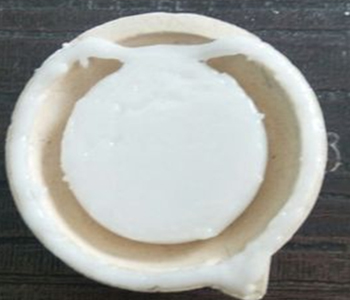





We sell high quality feldspar for all industrial purposes. It is a universal flux used in all types of ceramic bodies &glaze. Feldspar is mainly used in the manufacture of Glass, Pottery, Ceramics, Vitrified enamels, Special Electrical porcelain, Wind Plates and Opalescent glass as well as glassware. The glass & ceramic industries are the major consumers of feldspar.
In ceramic bodies, the main vitrifying (fluxing) agent is feldspar. The majority of white ware bodies contain good proportions of feldspar. It acts as a flux. In the ceramic industry, the flux is defined as that portion of the body which develops glass phase. This is provided mostly by feldspar. The amount of flux in a ceramic body should be only in such a proportion as to develop the desired amount of verification. If excess of flux is added, the fired body becomes very glassy and consequently, brittle.
The glass and ceramic industries are the major consumers of feldspar and account for 95% of the total consumption.
In the manufacture of ceramics, feldspar is the second most important ingredient after clay. Feldspar does not have a strict melting point, since it melts gradually over a range of temperatures. This greatly facilitates the melting of quartz and clays and, through appropriate mixing, allows modulations of this important step of ceramic making. Feldspars are used as fluxing agents to form a glassy phase at low temperatures and as a source of alkalies and alumina in glazes. They improve the strength, toughness, and durability of the ceramic body, and cement the crystalline phase of other ingredients, softening, melting and wetting other batch constituents.
Feldspar is an important ingredient in the manufacture of glass and an important raw material as well, because it acts as a fluxing agent, reducing the melting temperature of quartz and helping to control the viscosity of glass. The alkali content in feldspar acts as flux, lowering the glass batch melting temperature and thus reducing production costs.
Feldspars also are used as fillers and extenders in applications such as paints, plastics and rubber. Beneficial properties of feldspars include good dispersability, high chemical inertness, stable pH, high resistance to abrasion, low viscosity at high filler loading, interesting refractive index and resistance to frosting. The products used in such applications are generally fine-milled grades.
Feldspar assists the enamel composition, assuring the absence of defects and the neatness of the end product: e.g. enamel frits, ceramic glazes, ceramic tile glazes, sanitaryware, tableware, electrical porcelain and giftware.
paint, mild abrasives, urethane, welding electrodes (production of steel), latex foam, the welding of rod coating, and road aggregate.
In the flooring sector, feldspar is the main constituent in the body composition. It is used as a flux, lowering the vitrifying temperature of a ceramic body during firing and forming a glassy phase. Surface tension pull the remaining solid particles together, giving a densification of the ceramic body. With rising temperatures the alkalis become more active and first dissolve the clay particles and then the free silica.
In sanitaryware, the use of feldspar within vitreous ceramic bodies is used to facilitate the optimization process.
Properties |
Chemical Name |
K 1 |
K 2 |
K 3 |
Silica |
SiO2 |
65% (± 1%) |
67% (± 1%) |
69%(±1%) |
Alumina |
Al2O3 |
17% (± 1.0%) |
16% (± 1.0%) |
16% (± 1.0%) |
Potassium Oxide |
K2O |
12% (± 0.5%) |
10% (± 0.5%) |
8% (± 1.0%) |
Sodium Oxide |
Na2O |
2% (± 1%) |
3% (± 1%) |
3% (± 1.0%) |
Titanium Oxide |
TiO2 |
Nil |
Nil |
Nil |
Calcium Oxide |
CaO |
<0.30% |
<0.30% |
<0.30% |
Magnesium Oxide |
MgO |
<.0.01% |
<.0.01% |
<.0.01% |
Ferric Oxide |
Fe2O3 |
0.03%(±0.01%) |
0.06% (±0.02%) |
0.05% (±1.0%) |
Loss on Ignition |
LOI |
0.10% |
0.10% |
0.15% |





